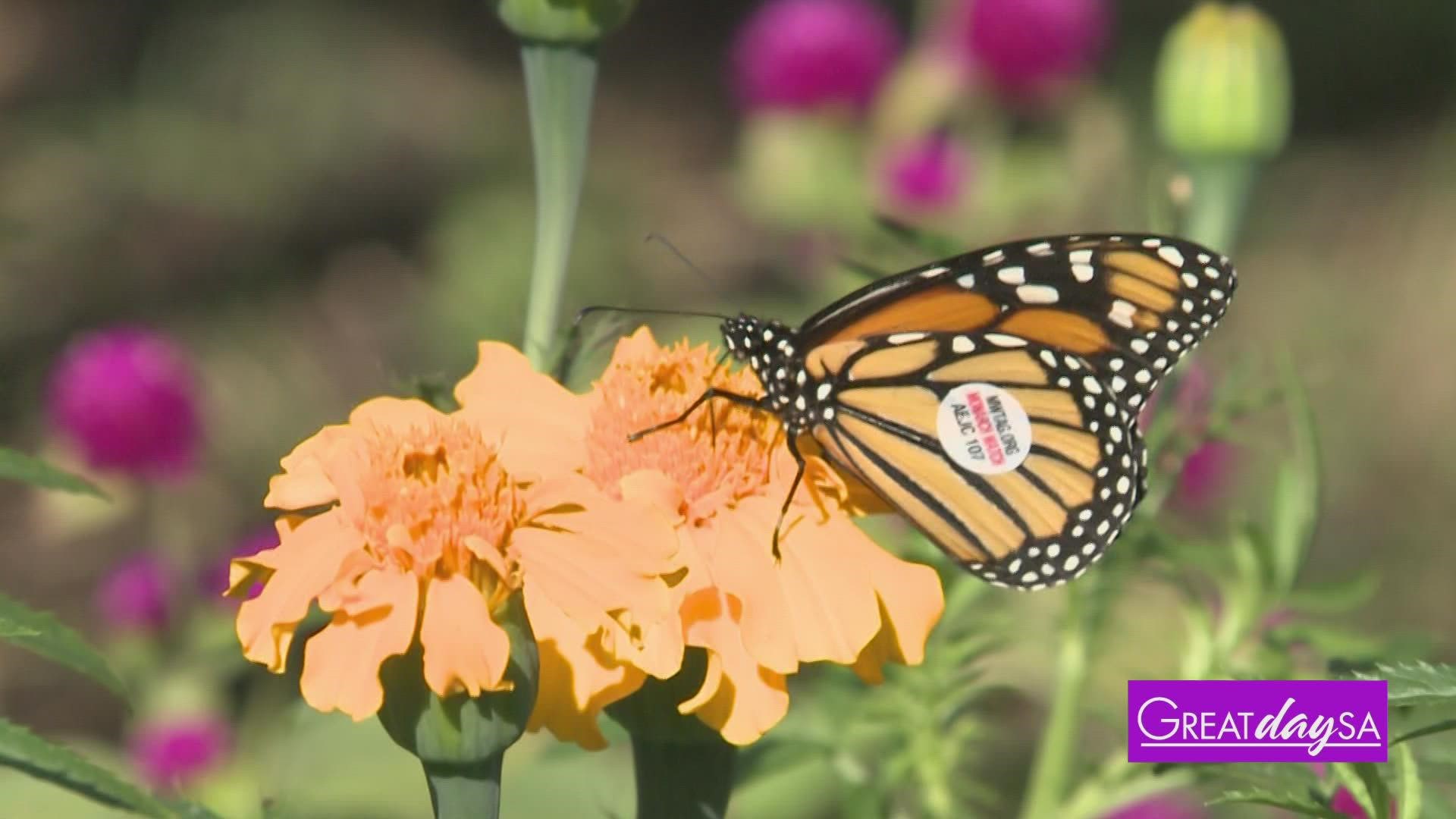SAN ANTONIO — Inside an envelope-resting in a clear, plastic container-lies a special delivery. The delivery took more than 20 hours of travel in a trip well worth it--especially for the woman carrying the weight.
Patty Loving is originally from Texas, but recently moved to Iowa to continue into the next phase of her life. She is now back in San Antonio all because of a Facebook post.
The Jester Park Nature Center in Iowa recently found a female monarch butterfly. The butterfly hatched later than normal, during a time when temperatures reached freezing in Iowa.
“What I think happed here is they had a few warm days in Iowa and she hatched,” Jean Hackett, master naturalist and eco poet, said.
Hackett is from San Antonio and believes changes happening to our climate is the cause.
“Traditionally, what they say is if this happens this late in the season, you just let nature take it’s course—let the butterfly die,” Hackett said.
But the Nature Center made a post on Facebook, hoping to give this one a chance--and Patty Loving saw it.
"It was 1500 miles away from Mexico where they go to migrate,” Loving said.
Most monarchs only live up to a few weeks, but this one is special.
"The Methuselah generation will migrate 3,000 miles from Canada to Michoacan,” Hackett said.
However, due to the freezing temperatures in Iowa and lack of plant life caused by it, the chances of this butterfly making the full flight to Mexico were impossible.
That is where the envelope comes in.
Conservationists slide the monarch inside the fold, then placed it into a tupperware container inside a chilled bag. Loving then took flight with the precious cargo.
“Flew Southwest Airlines they hooked me up because I had to get permission to fly with an insect,” Loving said. “I was real careful, didn’t move or order drinks or anything.”
If the butterfly could stay alive long enough to make it to San Antonio, she would have a better chance of getting to Michoacan.
A flight delay and a car ride later, they both made it to Cielo, a community garden that is growing exactly what the monarch needs. The garden also has people ready to support that effort that was made to get the butterfly there.
Dr. Carmen Tafolla said the butterfly migration that we usually see in October was barely noticeable this year.
“Butterflies and pollinators are the canary in the coal mine,” Dr. Tafolla said. “When the butterflies disappear our pollinators disappear, our food source disappears, this is our food source.”
After warming the butterfly for an hour and seeing no movement, everyone assumed the worst. But with some patience and a little push, the butterfly emerged.
“In a time when everything has been so dark….there’s joy," Loving said.
The butterfly woke up for everyone to see before catching up on some much-needed grub. Now, she will refuel, build up her energy and continue on her path, helping to pollinate and keep the planet alive with each flap of her wing.
“Who knows how many generations of butterflies that will impact…and what difference it’ll be for all other living creatures on this planet,” Dr. Tafolla said.
The conservationist and enthusiast said a gready way to help conservation efforts is by planting marijold or milk weed for butterflies in our own gardens. It is a small effort with a huge payoff.

